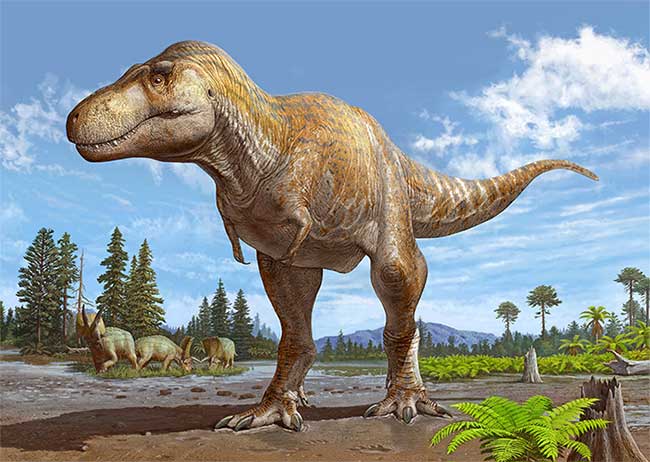The “King of Monsters” belongs to an entirely new species that suggests the Tyrannosaurus rex may never have truly held the crown in the world of dinosaurs.
According to Live Science, a British-American research team discovered the “King of Monsters” after spending over 10 years re-evaluating fossils, which included a peculiar skull fragment that had been misclassified as a Tyrannosaurus rex (T-rex).

A new name has been given to the “King of Monsters” fossil – (Photo: NEW MEXICO MUSEUM OF NATURAL HISTORY).
This specimen has been excavated since 1983 and has been displayed at the New Mexico Museum of Natural History (USA) for decades.
The secret it holds was revealed through a scientific paper published in the journal Scientific Reports on January 11: It is an entirely new species named Tyrannosaurus mcraeensis.
This monster dates back approximately 71-73 million years, meaning it existed before the first T-rex emerged 3-5 million years later. Although it belongs to the Tyrannosaurus family, the T-mcraeensis shows significant morphological differences compared to the “former king” T-rex.
According to paleontologist Nick Longrich from the University of Bath (UK), the most notable difference is the slender and more curved lower jaw. It also lacks several prominent, rugged details above the eyes compared to the T-rex.
Interestingly, the skull of the T-mcraeensis has led scientists to suspect that it was not an exceptionally large specimen of its species, yet its body size is still around 12 meters, equivalent to a typical large T-rex.
The teeth of T-mcraeensis may even be larger than those of the T-rex. In terms of overall strength and danger, T-mcraeensis could match or even surpass the T-rex.
There may have even been catastrophic battles between these two species or chaotic clashes with other ferocious dinosaurs in what is now North America.
The T-rex and its “siblings” – including the newly discovered T-mcraeensis – primarily lived in the ancient land known as Laramidia, which consisted of what is now the western coastline of North America, stretching from present-day Alaska down to Mexico.
Nonetheless, Tyrannosaurus species may have also spread to Asia, based on some yet uncertain evidence.


















































